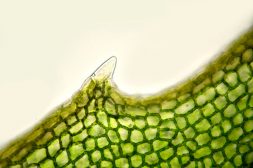Definition
noun, plural: synthases
(biochemistry) An enzyme that catalyzes the synthesis of a compound
Supplement
Synthases are enzymes that promote the synthesis of a compound or substance. Their action is the opposite of that of snythetases. Furthermore, synthases do not use or require a high-energy source (e.g. ATP) whereas synthetases do. Nevertheless, synthases belong to the lyase group (EC 4). Lyases are enzymes that catalyze the breaking a chemical bond between two parts of a molecule through biochemical means other than hydrolysis and oxidation. Accordingly, synthases are lyases going in the reverse direction and are NTP-independent.
ATP synthase is one of the synthases. It is associated with the synthesis of ATPs. ATP is formed by joining ADP and an inorganic phosphate. Another enzyme from this group is citrate synthase. This synthase catalyzes the condensation reaction of the acetate residue from acetyl coenzyme A and oxaloacetate, forming citrate. Other examples of synthases are tryptophan synthase, fatty acid synthase, etc.
See also:
Related term(s):







